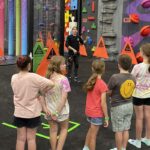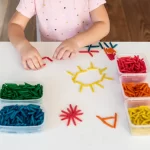Building the Foundation for Your Child’s Future
We recognize that early education plays a large role in your child’s later academic success. These studies have shown that quality early education programs cultivate longer attention spans, stronger social abilities, and better language and math skills well into elementary school. In addition, the studies reveal that children who receive quality early education are more likely to graduate from high school, more likely to hold high paying jobs, and even more likely to own their own house.

Children’s Incursions & Excursions: So Many Tech Options
In today’s rapidly evolving world, the landscape of education for children is continually transforming, embracing technological advancements to enhance learning experiences. Gone are the days of traditional field trips; instead, educators and parents are exploring the vast realm of tech and robotics to provide children with immersive and engaging incursions and excursions. This article explores the myriad options available, highlighting the benefits and considerations when incorporating technology and robotics into children’s educational adventures.
1. Virtual Reality (VR) Expeditions:
One of the most revolutionary technologies in education is Virtual Reality (VR). VR expeditions allow children to embark on virtual journeys to historical landmarks, outer space, or even the microscopic world. These immersive experiences not only captivate young minds but also provide a safe and controlled environment for exploration, eliminating geographical constraints and associated costs.
2. Augmented Reality (AR) Scavenger Hunts:
Augmented Reality transforms the physical world by overlaying digital information. Imagine a scavenger hunt where children use AR-enabled devices to discover hidden treasures, historical facts, or even solve educational puzzles. AR scavenger hunts turn mundane excursions into thrilling adventures, fostering teamwork and critical thinking skills.
3. Coding Workshops and Robotics Labs:
Introducing children to the world of coding and robotics at an early age sparks creativity and problem-solving skills. Organizing coding workshops and robotics labs as part of incursions allows kids to get hands-on experience in programming and building robots. While these workshops sometimes happen in external classrooms as incursions, technology works best with educators coming into the location where kids feel most comfortable. These activities not only stimulate logical thinking but also encourage an interest in STEM (Science, Technology, Engineering, and Mathematics) fields.
4. Interactive Museum Exhibits:
Traditional museum visits can be transformed with interactive exhibits powered by technology. Touchscreens, audio guides, and interactive displays provide a dynamic learning experience. Children can engage with history, science, and art in a way that goes beyond reading placards, making the educational journey more captivating and memorable.
5. Nature Exploration with Drones:
Taking children on excursions into nature becomes more exhilarating with the use of drones. Drones provide a bird’s-eye view of landscapes, allowing kids to explore areas that may be inaccessible on foot. This technology not only adds an element of adventure but also promotes environmental awareness and appreciation for the world around them.
6. Gamified Learning Platforms:
Incorporating gamification into educational excursions can make learning more enjoyable. Gamified learning platforms use interactive games to teach various subjects. Kids learn together in excitement and the benefits of team experiences are huge when collective consciousness merges as one. Whether exploring history through a time-travel game or learning geography through virtual exploration, these platforms engage children while reinforcing educational concepts.
Benefits of Tech-Infused Incursions and Excursions:
a. Enhanced Engagement: Technology captures children’s attention and curiosity, making the learning process more engaging and enjoyable.
b. Accessibility: Virtual experiences and online resources break down geographical barriers, providing access to educational content regardless of location.
c. Real-world Application: Hands-on experiences with coding, robotics, and other technologies allow children to apply theoretical knowledge in practical settings, preparing them for the future.
d. Customization: Tech-infused activities can be tailored to individual learning styles, ensuring that each child’s unique needs are met.
Considerations for Implementation:
a. Age Appropriateness: Choose technologies and activities that align with the age and developmental stage of the children involved.
b. Supervision: Adequate adult supervision is crucial to ensure the safety and well-being of children, especially when using advanced technologies.
c. Balancing Screen Time: While technology is beneficial, it’s essential to strike a balance and avoid excessive screen time. Incorporate a mix of digital and hands-on activities.
d. Inclusive Approach: Ensure that tech-infused incursions and excursions are inclusive, considering the diverse needs and abilities of all children involved.
Navigating the Technological Frontier: Enhancing Children’s Incursions & Excursions with Tech & Robotics
Incorporating technology and robotics into children’s incursions and excursions opens up a world of possibilities, offering immersive and enriching learning experiences. From virtual reality adventures to coding workshops, these innovative approaches not only make education more exciting but also prepare children for the increasingly tech-driven future. As educators and parents navigate this technological frontier, it’s essential to strike a balance, ensuring that the benefits of technology are harnessed while considering the unique needs of each child. Through thoughtful integration, we can transform educational excursions into unforgettable journeys of discovery and learning.

Sailability: Vacation Care is a Breeze
As school holidays approach, parents are often on the lookout for unique and enriching activities to keep their kids engaged and entertained. Enter “Sailability Vacation Care,” a program that not only provides a breath of fresh air but also an exhilarating sailing experience for children. In this article, we’ll explore the fantastic world of Sailability and how it offers a breeze of excitement for kids during their vacation.
Setting Sail for Adventure:
Sailability is a renowned organization dedicated to making sailing accessible to people of all ages and abilities. Their Vacation Care program is specially designed to cater to children, providing them with an unforgettable sailing adventure. The program focuses on fostering a love for the open water, teaching valuable life skills, and building confidence in a safe and supportive environment.
Learning the Ropes:
One of the key aspects of Sailability’s Vacation Care is the emphasis on education. Children are not just passengers on the boat; they actively participate in the sailing process. Experienced instructors guide them through the basics of sailing, teaching them how to hoist the sails, steer the boat, and understand the wind’s dynamics. This hands-on experience not only instills a sense of accomplishment but also imparts valuable nautical knowledge.
Building Confidence and Teamwork:
Sailing is not just about navigating the waters; it’s also about teamwork and communication. Sailability’s Vacation Care encourages children to work together to ensure the smooth operation of the boat. Simply put your kid will love the Sailability vacation care experience because they totally rely on each other for safety and fun. Learning to collaborate with others fosters a sense of responsibility and teamwork, valuable skills that extend beyond the sailing experience and into various aspects of life.
Navigating Challenges:
Sailing, like life, comes with its own set of challenges. Navigating the open waters requires adaptability, problem-solving skills, and resilience—all of which are crucial life lessons for children. Sailability instructors create an environment that encourages kids to face challenges head-on, teaching them to stay calm under pressure and find solutions to unexpected situations. These lessons are not just about sailing but also about building a resilient mindset that will serve them well in the future.
Connecting with Nature:
In an age dominated by screens and technology, Sailability’s Vacation Care offers a refreshing break by connecting children with the natural world. Sailing exposes them to the beauty of the open water, the feeling of the wind in their hair, and the sights and sounds of nature. This connection with the environment helps foster a sense of appreciation for the world around them and instills a lifelong love for outdoor activities.
Inclusive Sailing for All:
Sailability prides itself on its commitment to inclusivity. The Vacation Care program is designed to accommodate children of all abilities, ensuring that everyone has the opportunity to experience the joys of sailing. It’s most definitely an empowering activity for girls as it doesn’t require strength but rather adaptability and intelligence. Adaptive equipment and trained staff make it possible for children with diverse needs to participate fully in the program, promoting an inclusive and supportive environment.
Safety First:
Parents often prioritize the safety of their children above all else, and Sailability recognizes this concern. The organization places a strong emphasis on safety protocols, ensuring that all participants are provided with the necessary safety gear and are supervised by qualified instructors. This commitment to safety allows parents to relax and enjoy the knowledge that their children are in capable hands.
Exciting Sailing Excursions for Kids
Sailability’s Vacation Care offers a unique and enriching sailing experience for kids, combining education, teamwork, and a connection with nature. Beyond the thrill of sailing, the program instills valuable life skills, builds confidence, and promotes inclusivity. As parents seek activities that go beyond the ordinary for their children’s vacation, Sailability stands out as a beacon of adventure, making vacation care a breeze for both kids and their families.
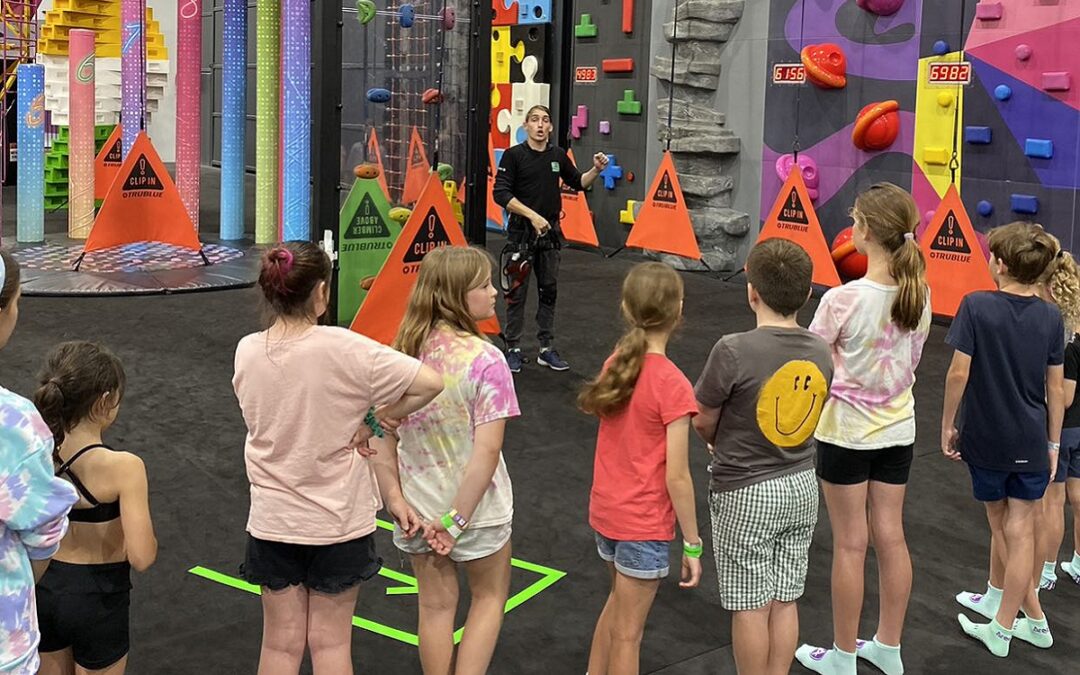
Does Vacation Care Enhance The Classroom? Teachers Perspective
Generally, school holidays provide a great time full of joy and wonder for school kids. However, most parents might have different feelings when their kids close school for holidays. The good news is that you can access holiday care programs, which prove resourceful for many parents. These programs enable parents and guardians to work without worrying about the well-being of their kids. In fact, the kids are provided with a safe place to make new friends, learn and play. Vacation care offers kids numerous benefits during their development, which impacts their lives overall. For instance, learning about indigenous peoples at vacation care helps a child develop empathy. And this makes their social life much better and more practical.
This article provides the benefits of vacation care your kids will enjoy.
Helps Improve Social Skills and Friendships
We can all agree that children learn a lot by socializing with other people. Whether it is kids of the same age, teachers, kids older or younger or even supervisors, the accessibility to different people enhances their communication skills and elevates their emotional intelligence.
Even though a loving family surrounding is the focal point, interacting with other people and learning their ideas offers new chances for learning and discovery. In other words, it can be empowering for a child, helping them become more adventurous.
Typically, fostering existing friendships and developing new ones can be challenging for both adults and kids. The good news is that vacation care programs for kids provide safety, structure and access to other kids in the same situations. Social skills development is crucial to children, and children who lack friends can suffer mental and emotional challenges in future.
Provides Active, Stimulating and Encouraging Play
Playing is crucial when it comes to child development. Playing involves engaging in recreational or enjoyment activities instead of for practical reasons. Typically, playing provides kids with an opportunity to interact with their environment naturally, thus boosting socialization and learning. In addition to being enjoyable, playing with kids is associated with physical, emotional and social well-being.
Through play, children can utilize their creativity, thus developing their physical skills and imagination while with others. Since vacation care offers a safe place for kids to play, they become equipped with emotional, cognitive and physical skills. Also, the vacation care programs allow kids to play with their teachers and supervisors who can tailor sports and games to particular physical and mental boosting activities.
Promotes Healthy Childhood Development
Your kids develop important language and social skills during their childhood years, and this impacts their later years and overall life as well. Through vacation care programs, kids can learn how to take care of the environment and people around them and how to communicate with others properly.
Primarily, healthy child development depends on numerous aspects, including opportunities for movement and physical development, mental stimulation and structure and unstructured play. As a parent, it can be challenging to come up with new activities every day for your kids during the holidays, especially if you have a tight schedule. The good news is that vacation care programs offer this and more, thus, healthy childhood development.
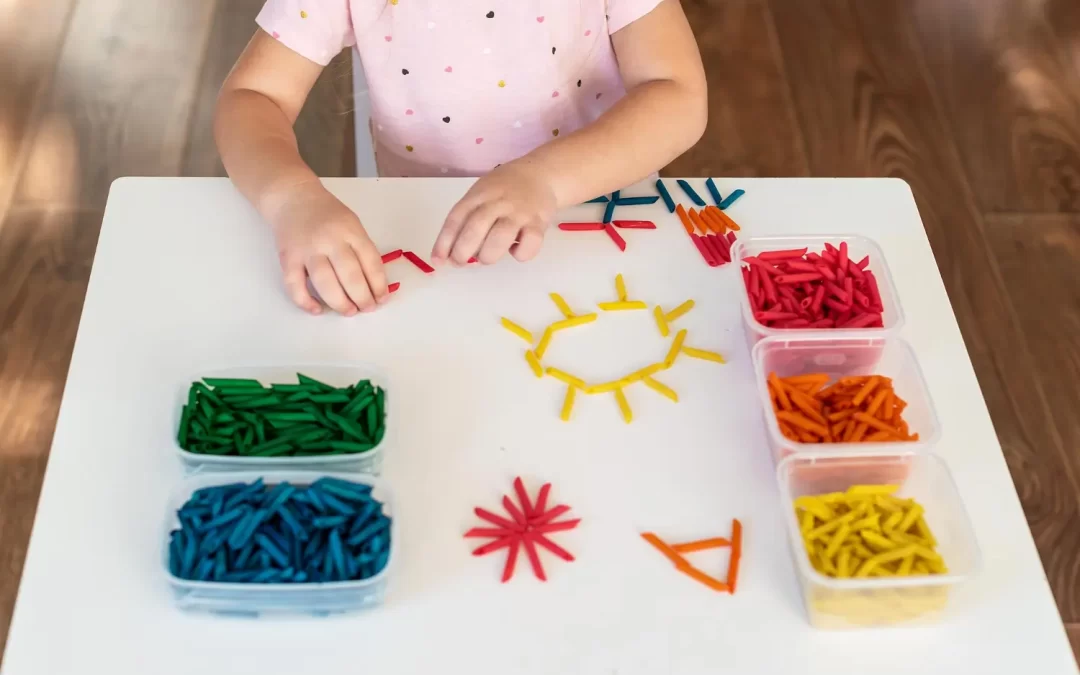
Fun Educational Holiday Activities For Students
The holiday season is a time for relaxation, but it’s also an opportunity for students to engage in fun and educational activities that can keep their minds active and foster learning outside the classroom. In today’s digital age, students often spend a significant portion of their free time browsing social media for activities and entertainment. However, there are countless alternatives that can be both enjoyable and intellectually stimulating. In this article, we will explore some exciting ways students can make the most of their holidays through fun and educational activities.
1. Online Learning Platforms
In a world where technology plays a crucial role in education, there is an abundance of online learning platforms that offer courses on a wide range of subjects. Students can utilize platforms like Coursera, Khan Academy, and edX to explore subjects they are passionate about or delve into new areas of interest. These courses not only provide knowledge but also help develop critical thinking skills and self-discipline.
2. Reading Challenges
Reading is a fantastic way for students to expand their horizons while having fun. Encourage your child to participate in a reading challenge during the holidays. Set a goal for them to read a certain number of books or pages over the break. You can also create a reward system to motivate them. Not only will this improve their literacy skills, but it will also ignite their imagination.
3. Educational Games
There is a wide array of educational games available that can make learning enjoyable. From interactive science experiments to math puzzles and language learning apps, students can find games that cater to their specific interests and learning needs. Many of these games are designed to be engaging and challenging, making them an excellent choice for holiday activities.
4. Creative Projects
Encourage students to unleash their creativity during the holidays. Whether it’s writing short stories, painting, crafting, or even starting a blog, creative projects can be both an ideal fun and educational holiday activities for students. These activities enhance self-expression and problem-solving abilities, all while allowing students to explore their passions.
5. Volunteering Opportunities
The holiday season is also an excellent time for students to engage in volunteer work. Participating in community service not only helps them develop a sense of empathy and social responsibility but can also be a valuable educational experience. Whether it’s helping at a local food bank, organizing a charity event, or assisting with environmental cleanup, there are numerous opportunities to give back and learn about the world.
6. Science Experiments
For those who have a passion for science, conducting experiments at home can be both exciting and educational. There are countless simple experiments that can be done using everyday household items. These experiments not only teach scientific principles but also foster curiosity and critical thinking.
Conclusion
In today’s digital age, students may spend a considerable amount of time browsing social media for activities during the holidays. However, with a little guidance and encouragement, they can engage in fun and educational activities that will enrich their minds and provide a sense of accomplishment. From online learning platforms and reading challenges to educational games, creative projects, and volunteering opportunities, there are countless ways for students to make the most of their holiday break. So, let’s encourage students to put down their screens and embark on a journey of learning and self-discovery during their time off.
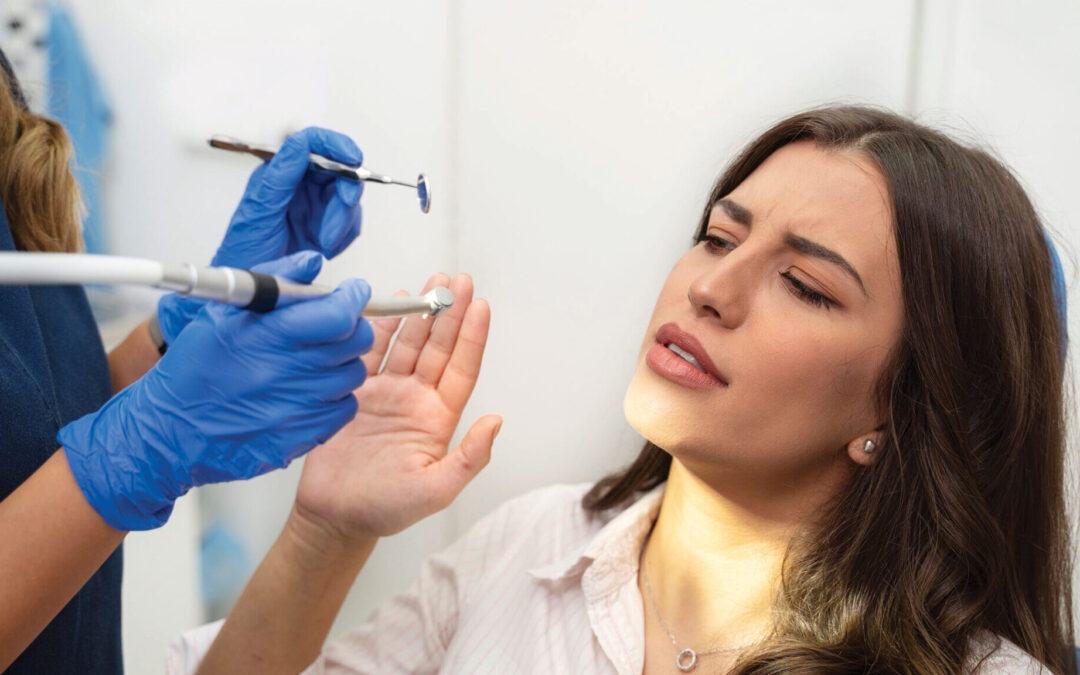
Dentally And Mentally These Things Matter
Imagine this: you wake up in the morning, feeling refreshed and ready to take on the day. You brush your teeth, revealing a dazzling smile that instantly boosts your confidence. As you go about your day, you find yourself feeling more positive, more energized, and even more motivated. How is this possible? Well, it turns out that dental health plays a bigger role in our overall well-being than we may think.
In this blog post, we’ll explore the connection between dental health and mental health. We’ll delve into why poor dental health can lead to mental health problems and discuss some simple habits you can develop for good dental hygiene. Plus, if you’re worried about affording dental care, we’ll offer some suggestions on how to get the help you need.
So grab a cup of tea (or coffee!) and join us as we uncover the importance of dentally and mentally taking care of ourselves!
Dental health is important for overall health
When we think about our overall health, dental care might not be the first thing that comes to mind. But the truth is, maintaining good oral hygiene is crucial for our well-being in more ways than one.
First and foremost, dental health impacts our physical health. Poor oral hygiene can lead to gum disease, tooth decay, and even tooth loss. These issues not only cause pain and discomfort but can also affect our ability to eat nutritious foods properly. In turn, this can have a negative impact on our overall nutrition and weaken our immune system.
But it doesn’t stop there! The connection between dental health and mental health is also significant. Research has shown that poor oral health is associated with an increased risk of developing mental health problems such as depression and anxiety.
Think about it – when you’re dealing with persistent toothaches or embarrassing dental issues like crooked teeth or bad breath, it’s hard to feel confident and maintain a positive mindset. Our smile plays a big role in how we perceive ourselves and how others perceive us too.
Taking care of your dental health not only ensures stronger teeth and gums but also contributes to your overall well-being. So make sure you prioritize regular brushing, flossing, visiting your dentist regularly, and adopting other healthy habits like avoiding excessive sugar intake.
Remember: dentally sound means mentally sound too!
Poor dental health can lead to mental health problems
Poor dental health can have a significant impact on our mental well-being. It may seem surprising, but the state of our teeth and gums can influence how we feel about ourselves and how others perceive us. When we have dental issues such as tooth decay, gum disease, or missing teeth, it can lead to feelings of embarrassment and self-consciousness.
These negative emotions associated with poor dental health can affect our confidence levels and self-esteem. We might avoid social interactions or smile less because we are ashamed of our oral condition. This can result in feelings of isolation and even depression over time.
Furthermore, chronic oral pain caused by dental problems can also take a toll on our mental health. Constant discomfort not only affects our ability to eat properly but also interferes with sleep patterns, concentration levels, and overall quality of life.
Addressing these mental health implications requires taking steps towards improving dental hygiene habits. Regular brushing, flossing, and visiting the dentist for check-ups are essential for maintaining good oral health. Additionally, seeking professional help from cosmetic dentistry options like invisalign offers effective way to straighten teeth using clear aligners while boosting confidence.
It’s important to remember that everyone deserves access to proper dental care regardless of their financial situation. If you cannot afford regular visits to the dentist or necessary treatments, there are resources available that provide assistance. Dental clinics at community colleges often offer discounted services provided by supervised students or you may be eligible for government-funded programs designed to support those who cannot afford private dental care.
In conclusion (not concluding): Taking care of your dental health is crucial not only for your physical well-being but also for your mental well-being too! By prioritizing good oral hygiene habits and seeking appropriate treatment when needed – whether it’s through traditional dentistry or cosmetic procedures like Invisalign – you’re investing in yourself both dentally AND mentally! So don’t neglect your pearly whites; they can make a big difference in how you feel about yourself and how others perceive you
Good dental health habits to develop
Good dental health habits are essential for maintaining a healthy smile and overall well-being. Here are some simple yet effective habits you can develop to keep your teeth and gums in top shape.
Brushing your teeth at least twice a day is crucial. Use a soft-bristled toothbrush and fluoride toothpaste to gently clean all surfaces of your teeth. Don’t forget to brush along the gumline as well.
Next, flossing daily is just as important as brushing. Flossing helps remove plaque and food particles from between your teeth where a toothbrush can’t reach.
In addition to brushing and flossing, using mouthwash can provide additional protection against bacteria and freshen your breath. Look for an alcohol-free mouthwash that contains fluoride for optimal results.
Maintaining a balanced diet is also key to good dental health. Limit sugary snacks and drinks, which can contribute to tooth decay. Instead, opt for nutritious foods like fruits, vegetables, lean proteins, and dairy products that promote strong teeth.
Regular dental check-ups are vital too. Schedule visits with your dentist every six months for professional cleanings and examinations. This allows any potential issues to be detected early on before they become more serious problems.
Avoid bad oral habits such as smoking or chewing tobacco, which not only stain your teeth but also increase the risk of gum disease and oral cancer.
By incorporating these practices into your routine, you’ll be taking proactive steps towards maintaining excellent dental health!
How to get help if you can’t afford dental care
If you find yourself in a situation where you can’t afford dental care, don’t fret! There are options available to help you maintain good oral health without breaking the bank. Here are some suggestions on how to get the assistance you need:
1. Research low-cost or free dental clinics in your area. Many communities have programs that provide affordable or even no-cost dental services to those who qualify based on income.
2. Look into dental schools or teaching hospitals. These institutions often offer reduced rates for procedures performed by students under the supervision of experienced professionals.
3. Consider applying for government assistance programs such as Medicaid or CHIP (Children’s Health Insurance Program). These programs may cover certain dental treatments for eligible individuals and families.
4. Explore nonprofit organizations that specialize in providing free or discounted dental care to underserved populations.
5. Reach out to local charities and foundations that focus on healthcare access and ask if they have any resources available specifically for dental treatment.
Remember, it’s important not to neglect your oral health due to financial constraints. By taking proactive steps and seeking out available resources, you can still receive the necessary care for a healthy smile!
Conclusion
Taking care of your dental health is not just important for maintaining a bright and confident smile, but it also plays a crucial role in your overall well-being. Neglecting your dental hygiene can have serious consequences on both your physical and mental health.
Research has shown that poor oral health can contribute to various mental health problems such as anxiety, depression, and low self-esteem. By taking proactive measures to maintain good dental habits, you can significantly reduce the risk of developing these issues and improve your quality of life.
Developing good dental habits starts with regular brushing and flossing, along with routine visits to the dentist. Incorporating mouthwash into your daily routine can also help eliminate harmful bacteria and keep your breath fresh. Additionally, avoiding sugary foods and drinks can prevent tooth decay and cavities.
If you find yourself unable to afford proper dental care, don’t despair. There are options available for those in need. Many communities have free or low-cost clinics that provide basic dental services. You may also consider reaching out to local dental schools where students often offer discounted treatments under supervision.
Cosmetic dentistry can help you live more positively, it offers effective solutions for enhancing the appearance of teeth through procedures like Invisalign clear aligners. These advanced orthodontic treatments straighten teeth without the use of traditional metal braces, providing a discreet option for individuals seeking cosmetic improvements.
By investing in cosmetic dentistry procedures like Invisalign clear aligners or other treatments tailored to meet your specific needs, you can achieve a more positive outlook on life while enjoying improved oral health benefits.
Remember that maintaining good oral hygiene should be an integral part of our daily lives because it not only helps us maintain healthy smiles but also contributes towards our overall well-being – dentally as well as mentally! So take charge today and prioritize both aspects for a happier you!
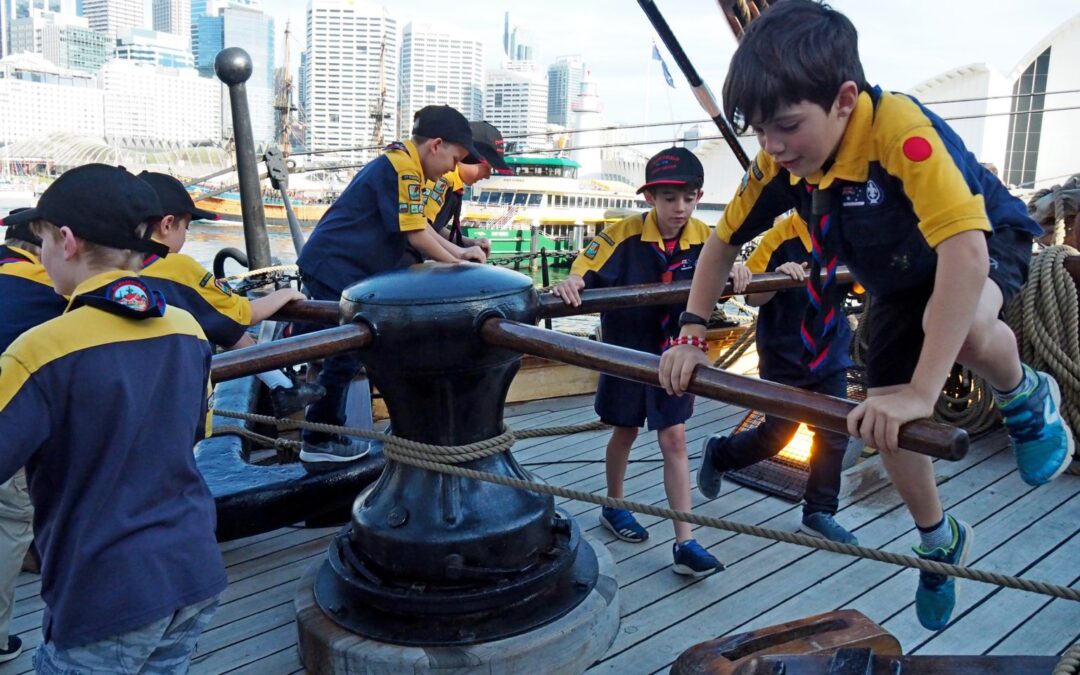
The Importance Of Excursion Activities In School
Are you ready to embark on an exciting adventure? Imagine a day filled with exploration, learning, and laughter. That’s the magic of school excursions! These exhilarating outings offer students a chance to step outside the classroom walls and immerse themselves in new experiences. From visiting museums and historical sites to exploring nature trails and science centers, school excursions hold immense importance in shaping young minds. In this blog post, we will delve into why these activities are essential for your child’s development, discover some fantastic excursion ideas for schools, explore how schools can make the most of these trips, all while keeping in mind the significance of maintaining children’s oral health along the way. So buckle up as we venture into an educational journey like no other!
What is an excursion?
An excursion, simply put, is a planned educational or recreational trip taken by students outside of their regular classroom environment. It’s like a window to the world beyond textbooks and lesson plans. These off-site adventures provide an opportunity for students to explore new places, engage in hands-on learning experiences, and broaden their horizons.
During excursions, children are exposed to real-world scenarios that help them connect what they’ve learned in the classroom with practical applications. Whether it’s visiting historical landmarks, exploring nature reserves, or attending cultural events, excursions offer a different kind of education – one that goes beyond traditional lectures.
These outings not only stimulate curiosity but also foster social skills and teamwork among students. They learn how to interact with peers and teachers in informal settings while developing valuable communication and problem-solving skills.
Excursions also play a significant role in promoting physical activity. Students get to participate in outdoor activities such as hiking, swimming or sports tournaments during these trips which helps keep them physically active and healthy.
Furthermore, school excursions encourage the next generation of young minds to appreciate art, history, science, culture, and various other subjects from a unique perspective. By experiencing things firsthand instead of just reading about them in textbooks, school excursions create lasting memories that can ignite lifelong passions and interests.
So whether it’s exploring ancient ruins or discovering the wonders of marine life on a field trip, your child will undoubtedly benefit from these exciting excursions far beyond their academic years!
Why are excursions important?
Why are excursions important? Well, let’s take a look at the benefits they bring. Excursions provide students with real-world experiences that simply cannot be replicated in the classroom. By venturing outside of school grounds, students have the chance to see and learn things firsthand.
Excursions help to foster a sense of curiosity and wonder in students. They allow them to explore new environments, cultures, and ideas – all of which contribute to their overall growth and development.
Moreover, excursions encourage active learning. Instead of passive listening or reading from textbooks, students engage in hands-on activities that require critical thinking and problem-solving skills. This kind of experiential learning is invaluable for retaining information long-term.
Additionally, excursions promote social interaction among students. They provide an opportunity for classmates to bond outside of the traditional classroom setting and develop stronger relationships.
Furthermore, excursions can spark interests or passions in certain subjects or fields for individual students. Whether it’s visiting a science museum or exploring historical landmarks, these experiences may ignite a lifelong passion or career trajectory.
In conclusion (even though I’m not supposed to conclude), school excursions play an integral role in enhancing education by providing authentic learning experiences beyond the confines of the classroom walls!
What are some good excursion activities for schools?
When it comes to planning excursion activities for schools, the options are truly endless. Schools have the opportunity to expose their students to a wide range of experiences and learning opportunities outside of the classroom. Here are some great excursion ideas that can enhance students’ educational journey.
1. Museum Visits: A trip to a local museum can be both educational and fun. It allows students to explore history, art, science, or any other subject in a hands-on and interactive way.
2. Nature Walks: Taking students on nature walks not only exposes them to the beauty of the natural world but also teaches them about environmental conservation and biodiversity.
3. Historical Landmarks: Visiting historical landmarks gives students a chance to learn about important events and figures from the past while connecting with their cultural heritage.
4. Science Centers: Science centers offer exciting exhibits and experiments that make learning about scientific concepts engaging and enjoyable.
5. Farm Visits: Taking students to farms provides valuable lessons on agriculture, animal care, sustainability, and healthy eating habits.
6. Community Service Projects: Engaging in community service activities allows students to develop empathy and social responsibility while making a positive impact in their community.
7. Cultural Festivals: Attending cultural festivals introduces students to different traditions, customs, music, dance forms, languages, costumes etc., promoting inclusivity and diversity awareness among them.
By incorporating these types of excursions into school curriculum plans regularly throughout the year or semester will broaden horizons beyond textbooks alone!
How can schools make the most of their excursions?
One of the keys to making the most of school excursions is careful planning. Schools should ensure that they choose excursion activities that align with their educational goals and curriculum. By selecting trips that are relevant to what students are learning in the classroom, schools can enhance and reinforce their lessons in a practical and engaging way.
Another important aspect is incorporating interactive elements into these outings. Excursions provide an opportunity for students to actively participate in hands-on learning experiences, rather than just passively listening or reading about a subject. Whether it’s visiting a museum, exploring nature trails, or attending cultural events, hands-on activities allow students to fully immerse themselves in the topic at hand.
In addition, schools should aim to make these excursions memorable by creating connections between what students see during their trip and their everyday lives. This can be achieved through pre-excursion preparation and post-excursion follow-up activities. Teachers can introduce related topics before the excursion so that students have some background knowledge when they visit a particular site or event. Afterward, teachers can engage them in discussions, projects, or presentations based on their experience.
Furthermore, it’s crucial for schools to prioritize safety during excursions by conducting thorough risk assessments and providing adequate supervision throughout the trip. Proper organization ensures smooth logistics and minimizes potential risks.
School excursions offer valuable opportunities for experiential learning outside of traditional classroom settings. By carefully planning relevant activities, promoting hands-on engagement with subjects being studied
Conclusion
School excursions play a crucial role in the overall development of students. These activities not only provide an opportunity for them to learn outside the classroom but also encourage social interaction and teamwork. Moreover, excursions can instill a sense of curiosity and exploration in young minds.
By incorporating excursion activities that helps promote maintaining children’s oral health, schools can further enhance the well-being of their students. Visiting dental clinics or organizing workshops on maintaining oral hygiene can help create awareness about this important aspect of health.
Schools should strive to make the most out of their excursions by carefully planning and aligning them with educational objectives. This includes selecting appropriate destinations and activities that are both fun and enriching for students. In addition, involving parents, teachers, and local communities in these experiences can contribute to a more comprehensive learning environment.
So let’s continue to encourage school excursions as they provide invaluable opportunities for our children to grow intellectually, socially, and emotionally. Let’s nurture their curiosity while ensuring their well-being – because after all, they are the future leaders who will shape our world!
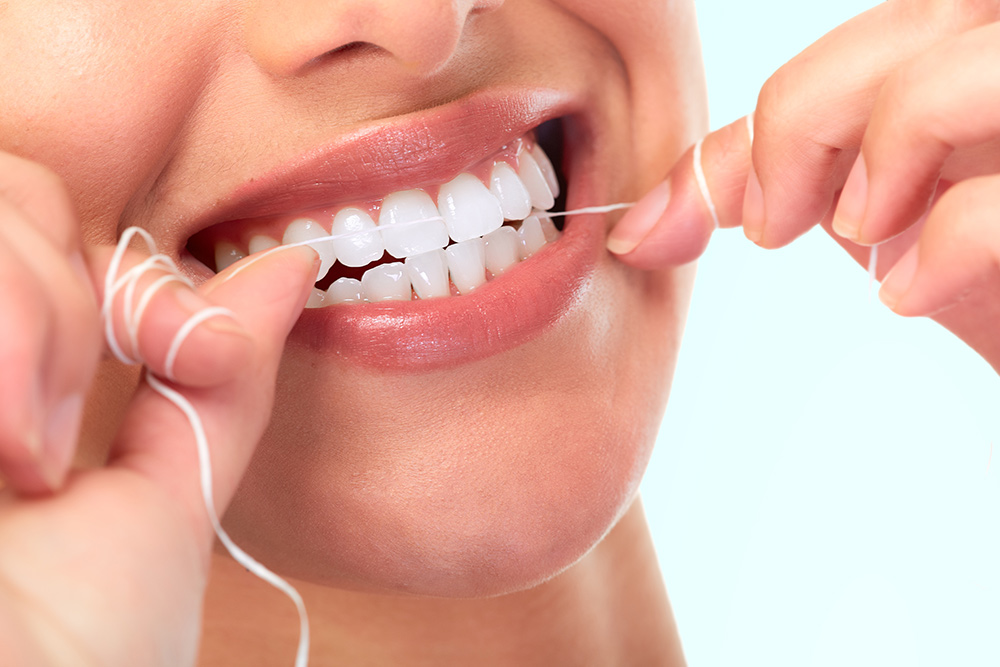
The New Science Non-Fiction Of Brushing Your Teeth
We all know that brushing our teeth is important. But did you know it’s also a fascinating new science worth exploring? The latest research in the field of dental hygiene has uncovered the ways in which brushing our teeth not only prevents cavities, but can also help us lead healthier and longer lives. In this blog post, we’ll take an up-close look at this new science non-fiction of brushing your teeth and uncover the secrets behind it. From the importance of proper technique to special toothpastes and more, find out everything you need to know about optimal dental hygiene today!
The old way of brushing your teeth
Brushing your teeth the old-fashioned way is no longer considered the best way to keep your pearly whites shining. In fact, there is now a new science to brushing your teeth that says brushing too hard can actually damage your enamel and make your teeth more susceptible to cavities. The new way of brushing your teeth is all about using soft, gentle strokes and taking your time to ensure all of your teeth are clean.
The new science of brushing your teeth
We all know that brushing our teeth is important for keeping our mouths healthy. But did you know that there is a science to brushing your teeth? That’s right! There are now studies that show how best to brush your teeth for optimal oral health.
So, what does the new science of brushing your teeth tell us? First, it is important to use a soft-bristled toothbrush. This will help to avoid damage to your gums and teeth. Second, use a pea-sized amount of toothpaste on your brush. You don’t need more than this to get your teeth clean.
Third, brush gently in a circular motion. Be sure to brush the front, top, and back of your teeth. Fourth, use floss or an interdental brush to clean between your teeth once a day. This will help remove plaque and food particles from areas that your toothbrush can’t reach.
By following these simple tips, you can be sure that you are brushing your teeth the right way for optimal oral health!
Why the new science is better
The new science of brushing your teeth is based on the latest research and discoveries in the field of dental health. This new science has shown that brushing your teeth correctly can significantly reduce the risk of developing cavities, gum disease, and other dental problems. Additionally, this new science has also demonstrated that proper brushing can help to remove plaque from teeth, which can lead to better overall oral health.
How to brush your teeth the new way
The old way of brushing your teeth is no longer considered the best way. In fact, it’s now thought that the old way may actually be harmful to your teeth and gums. The new science of brushing your teeth is based on the principle of gentle, circular motions. In case of missing teeth you can use dentures also known as false teeth made of acrylic (plastic), nylon or metal.
To brush your teeth the new way, start by wetting your toothbrush and then apply a pea-sized amount of toothpaste to the bristles. Gently massage your gums with the toothbrush for about 30 seconds before moving on to brush your teeth in a circular pattern. Invisalign are the alternative teeth straightening treatment to braces of teeth and marketing invisalign through social media is something dentists should do.
Conclusion
Brushing your teeth is an essential part of our daily lives and it seems that science has now offered us a few new insights into how to get the most out of this process. It’s great to see that researchers are making efforts to learn more about oral health and hygiene, which can ultimately lead to better dental care for everyone. If you brush your teeth on a regular basis and use these new techniques, you will be sure to have a healthier smile in no time!
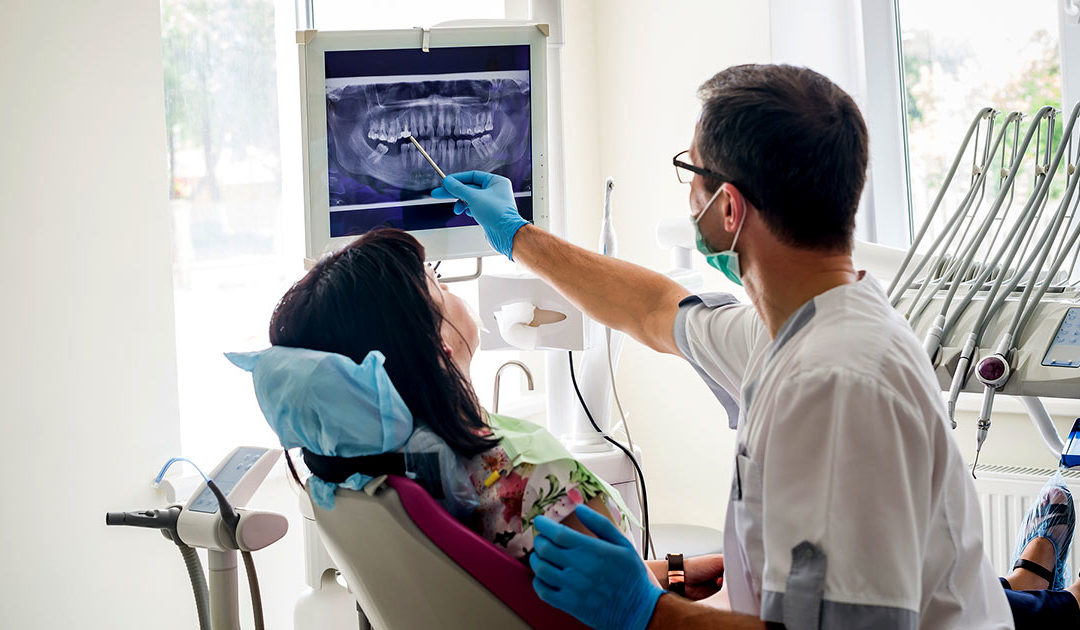
Double-Stranded in Tokyo: Novel Gum Disease Bone Loss Research
Gum disease is a broad term used to describe the inflammation of the gums. It is a common condition that affects many people at some point in their lives. In its early stages, gum disease is often reversible with proper oral hygiene. However, if left untreated, gum disease can progress and lead to bone loss. In a recent study published in the journal PLOS ONE, researchers from Tokyo Metropolitan University investigated the relationship between gum disease and bone loss using a unique method. They found that certain types of gum disease may actually cause bone loss by affecting the way our bones remodel themselves. This research provides new insight into the potential consequences of gum disease and highlights the importance of maintaining good oral hygiene.
What is periodontitis?
Periodontitis is a serious gum disease that can lead to tooth loss. It occurs when the gums become inflamed and infected, and the bone around the teeth begins to break down. Periodontitis is usually caused by plaque, a sticky film of bacteria that forms on teeth. If plaque is not removed, it can harden into tartar, which can cause the gums to become irritated and inflamed. The inflammation can eventually damage the bone and connective tissue that support the teeth.
There are two types of periodontitis: acute and chronic. Acute periodontitis is a sudden onset of the disease, while chronic periodontitis develops slowly over time. Symptoms of acute periodontitis include red, swollen, and bleeding gums; chronic periodontitis may not have any symptoms in its early stages.
Periodontitis can be treated with a combination of professional dental cleanings and at-home oral care. In severe cases, surgery may be necessary to restore the health of your gums and bones.
What causes periodontitis?
Periodontitis is a common inflammatory condition that affects the tissues and bones supporting the teeth. Periodontitis is caused by the overgrowth of certain bacteria in the mouth, which leads to the inflammation and destruction of these tissues. The most common cause of periodontitis is poor oral hygiene, which allows these bacteria to flourish. Other risk factors for periodontitis include tobacco use, diabetes, and certain genetic conditions.
The link between periodontitis and bone loss
As we age, our bones become more fragile and susceptible to injury. But did you know that poor oral health can also lead to bone loss? A new study has found a link between periodontitis, a common gum disease, and bone loss in the jaw.
Periodontitis is caused by bacteria that infect the gums and cause inflammation. If left untreated, it can damage the soft tissue and bone around the teeth. The new study, published in the Journal of Dental Research, found that periodontitis is linked to bone loss in the jawbone.
The study looked at data from over 1,000 Japanese adults aged 40-79. They found that those with periodontitis were more likely to have bone loss in their jawbone than those without the disease. The link was strongest in those with severe periodontitis.
This is not the first study to find a link between periodontitis and bone loss. However, it is one of the largest studies to look at this connection. The findings suggest that treating gum disease could help prevent or slow down bone loss in the jawbone.
If you have periodontitis, it’s important to see a dentist for treatment. You can also help keep your gums healthy by brushing and flossing regularly and seeing your dentist for regular checkups.
How does this research help us understand periodontitis and bone loss?
Periodontitis is a progressive inflammatory disease that leads to the destruction of the supporting tissues around the teeth, including the bone. The loss of bone around the teeth is a major concern in periodontitis, as it can lead to tooth loss.
This research helps us understand how periodontitis leads to bone loss. The researchers found that periodontitis leads to the activation of osteoclasts, which are cells that break down bone. They also found that this activation is mediated by a type of RNA called microRNA-29b.
This research provides new insights into the mechanisms of bone loss in periodontitis. It also highlights potential targets for new treatments for this debilitating disease.
Who is at risk for periodontitis?
Periodontitis is a serious gum infection that damages the soft tissue and destroys the bone supporting your teeth. Periodontitis is caused by plaque, a sticky film of bacteria that constantly forms on your teeth. If plaque is not removed, it can harden and turn into tartar. Tartar irritates your gums and causes them to swell and bleed. The inflammation caused by tartar can eventually destroy the tissues and bone that support your teeth, causing your teeth to fall out or become loose.
Periodontitis usually occurs in adults, but it can happen at any age. You are more likely to get periodontitis if you:
– Smoke cigarettes or use tobacco products
– Have diabetes or another medical condition that makes it difficult to control your blood sugar levels
– Take medications that decrease the flow of saliva (dry mouth)
– Have a family history of periodontal disease
How can you prevent periodontitis?
The best way to prevent periodontitis is to practice good oral hygiene though orthodox gum disease treatments are still effective as well. This means brushing your teeth twice a day, flossing daily, and using mouthwash. It’s also important to visit your dentist regularly for cleanings and checkups. If you have any risk factors for periodontitis, such as diabetes, it’s important to be extra diligent with your oral hygiene and to make sure you keep all of your dental appointments.
What are the implications of this research?
The study found that people with periodontitis (gum disease) were more likely to have a lower bone density in their jawbone. This means that they are at a higher risk for developing osteoporosis (a condition where bones become weak and fragile).
The researchers say that more studies need to be done to confirm their findings. However, if the link between periodontitis and osteoporosis is confirmed, it could have major implications for our understanding of both conditions.
For example, we may need to reconsider how we treat gum disease. Additionally, this research could lead to new ways of preventing or treating osteoporosis.
Further research needed
The link between periodontitis and decreased bone density has been well-established, but the mechanisms by which this occurs are not yet fully understood. This new study provides some novel insights into how periodontitis might lead to bone loss, but further research is needed to confirm these findings and to determine whether they are specific to Japanese patients. Though most things from Tokyo, or all of Japan, are considered stylish and embraced in Australia.
It is possible that the inflammation caused by periodontitis leads to increased levels of certain cytokines or other factors that promote bone resorption. Alternatively, the bacteria involved in periodontitis might directly affect bone cells. More research is needed to elucidate the precise mechanisms by which periodontitis leads to bone loss.
In addition, this study was conducted in a Japanese population and it is not clear whether the results are generalizable to other populations. Further research is needed to determine whether the findings of this study are specific to Japanese patients or whether they can be applied more broadly.
Conclusion
The findings of this research are significant because they suggest that gum disease may be a risk factor for bone loss, and not just a consequence. This means that treating gum disease may help to prevent or slow down the progression of bone loss, which is good news for people with periodontitis. The general number of dentists need multimedia content to tell exciting dental stories better. The researchers will continue to follow the study participants to see if there is a causal relationship between gum disease and bone loss, and whether treating gum disease can reduce the risk of osteoporosis.

Financial Literacy: How Early Can Kids Learn It?
If your kids are going to read one book this summer don’t make it Harry Potter rather introduce them to your bank statement. Sit down and spend half an hour with them a couple of times a week going over credit card and bank statements. The earlier you do it the more you will save yourself and them in the long run. We kind of think it is expected that young people will be profligate with money early on but is it really necessary? Financial literacy: How early can kids learn it?
Teach Them the Different Denominations Early
I remember teaching my kids via Monopoly about the different denominations of currency. This was no old time Monopoly either it was millions and billions of dollars in a fast paced modern megapolis property market. They must have been 5 and 7 years of age I reckon, and it was challenging explaining how money was broken down into different denominations. We got there in the end, however. The fact that neither of them speak to me now has little to do with this early education I figure. Learning about money in a materialistic and money obsessed society is a must. One day they will thank me for something!
First Home Buyers Can Be Made
You could begin by instilling hope in teenagers by teaching them what a FHLDS is. Although in the current climate home ownership may become a thing of the past and only for the filthy rich in the not too distant future. Money makes the world go around, as the song lyric says. Love may be a desirable intangible, a bit like that quaint anachronism faith, but understanding finance and commerce will be a far more useful skill to possess. Children grow up into adults and they require a solid grounding in the practical realities of what life is actually about. First home buyers can be made and not just born into it via wealth.
Learn the Real Numbers in Life
Dreams are all well and good, but people only bang on about stuff like that in the movies. Don’t burden your kids with aspirations made in Hollywood because in real life large groups of people do not applaud individuals in public for any reason except sports. Financial literacy sounds slightly dirty to those of us who have an Arts degree but in reality, it is a very good thing for children to have. Learn the real numbers in life – those with a dollar sign attached.
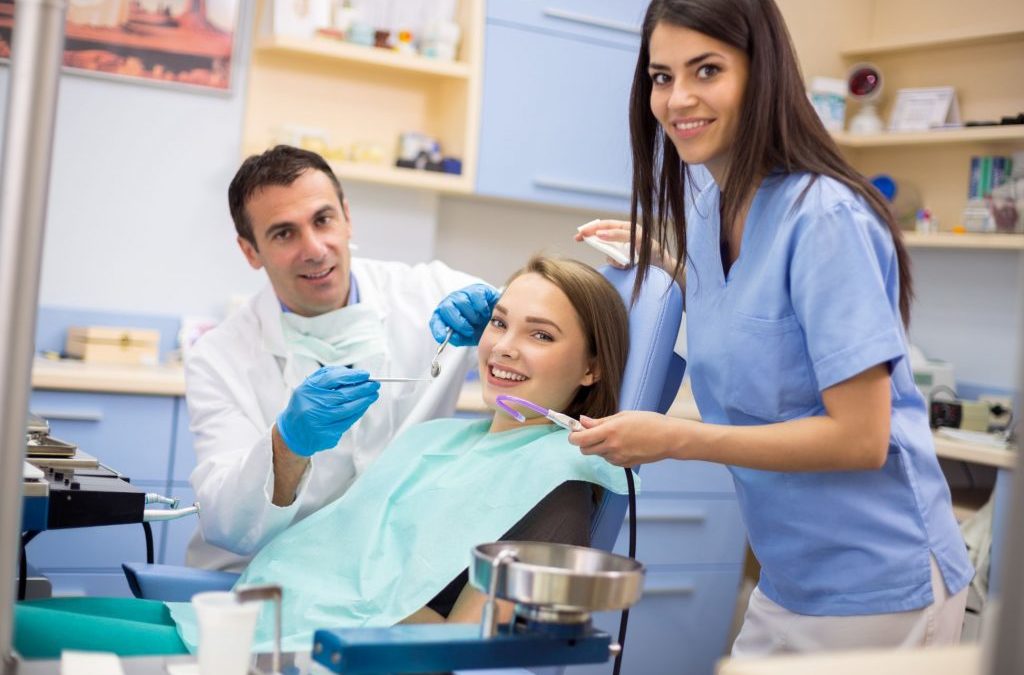
Cosmetic Dentistry Training: How To Specialise In It
As the Medical Aesthetics industry in Australia continues to grow year on year, demand for high quality aesthetic treatments administered by highly skilled dentists is crucial to ensure the highest standards in medical cosmetics are met. The best providers don’t just train you in the latest advanced medical aesthetic techniques, but also provide immediate employment opportunities in the industry not offered elsewhere.
Why Dentists Should Train in Facial Aesthetics
Australian educators have trained many dentists aspiring to create their dream lifestyle. Here are the top 6 benefits reported by dentists who have trained with them and are now working in this industry:
– Booming industry currently $4.4 billion and growing
– 45% increase in use of Dermal Filler & Anti Wrinkle Injection in the last year
– Increasing discovery of nonsurgical procedures with a huge shift towards Nonsurgical vs Surgical
– Easy to treat private patients alongside existing check ups
– Minimally invasive, Non-permanent, Low-risk work that is quite often reversible
– Short-course of training, quick and easy to administer (you can see many people in 1 clinic)
Would you like to put years of dental training and hard work into an industry where you could more than double your current income?
If the answer is yes, then read on to discover how you can train and work in an industry worth over $4 billion annually, and which is is crying out for highly qualified trained Aesthetic professionals.
There are many reasons why dentists should add facial aesthetics such as Dermal Filler & Anti Wrinkle Injection treatments to their cosmetic services. Many dentists enjoy their jobs but restructuring and targets can sometimes limit autonomy, job satisfaction and how much can be offered to their patients. We often hear from our delegates that many also want better job security, flexibility and better standards of pay and recognition for their efforts.
Dentists work on high profitability per hour so there needs to be bespoke solutions to help dentists achieve success without compromising their present income potential.
Through Dermal Filler & Anti Wrinkle Injection Training for Dentists, the training organisations’ mission is to help dental professionals across the Australia achieve many of the things they are missing in their current job roles.
And let’s not forget the happiness you will impart to your patients. Your training will shape your cosmetic dentistry patients’ feelings about themselves for the rest of their lives.
If you want to work in an environment where you are properly rewarded for your skills, efforts and knowledge, then the Medical Aesthetics industry is the best opportunity for any Australian dentist.
It’s certainly also the case that an understanding of dental technology is more important than ever and so having extra training as a dentist means you can become an authority in your industry – which can lead to social media influencing as well as possibly book authoring and TV and radio work. Reality TV for dentists is not far away in Australia and they’re almost certain to select a cosmetic dentist to be featured as it’s so visual.
The Dental Board of Australia Guidelines:
Please note that The Dental Board of Australia (“the board”) has published guidelines for what they expect of dentists when using cosmetic injectables in their practice.
The Board expects dentists to refer a patient to a suitably trained and qualified:
– dental practitioner – when the treatment required by the patient is outside the personal scope of practice of the individual dentist, but still within the definition of dentistry, or
– medical practitioner – when the proposed use of botulinum toxin or dermal fillers is outside the definition of dentistry.
For more info check out https://dermamedical.net.au/cosmetic-training-courses-for-dentists/



